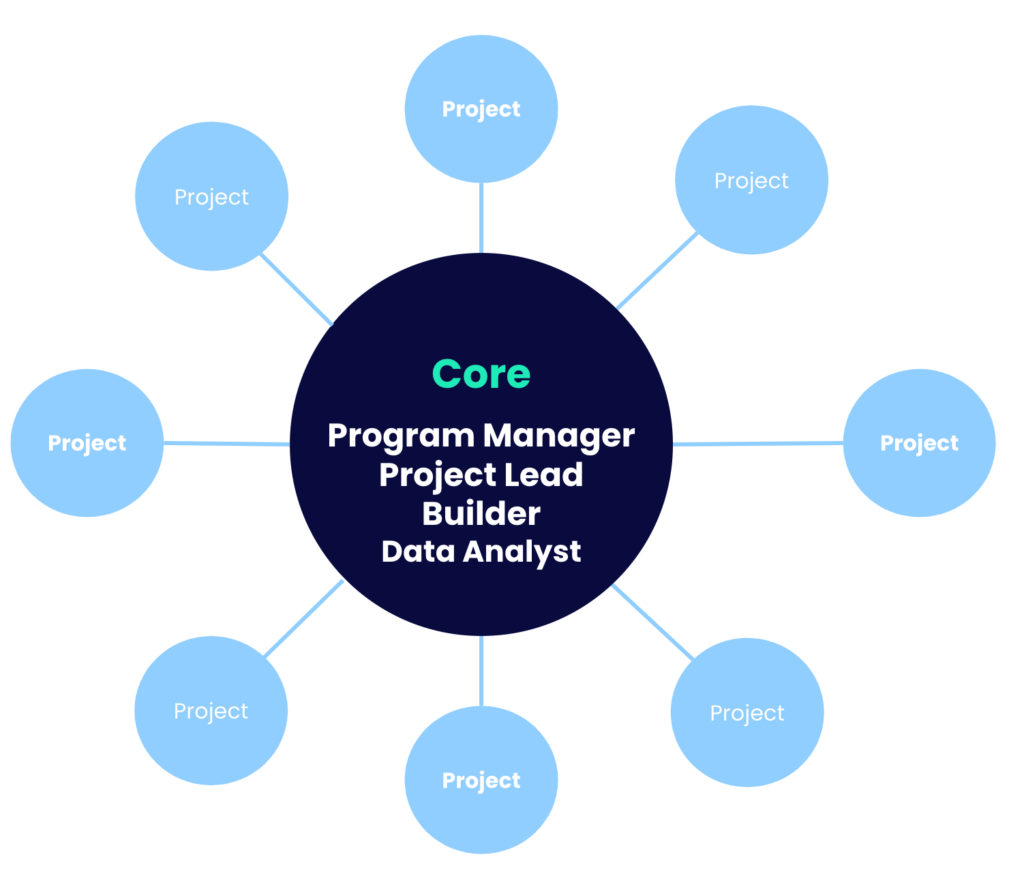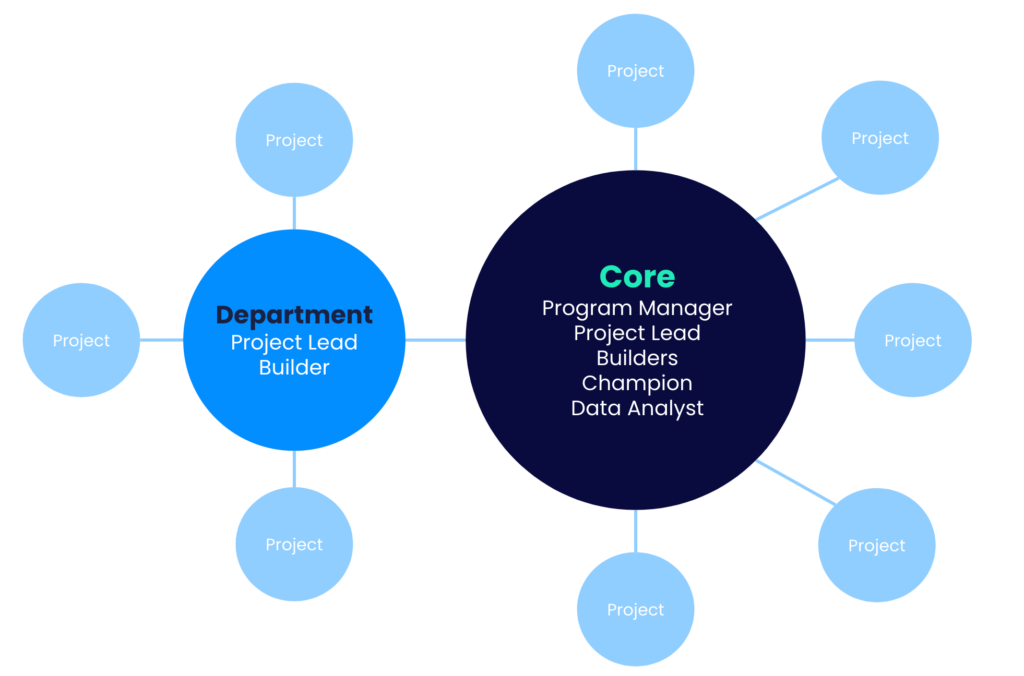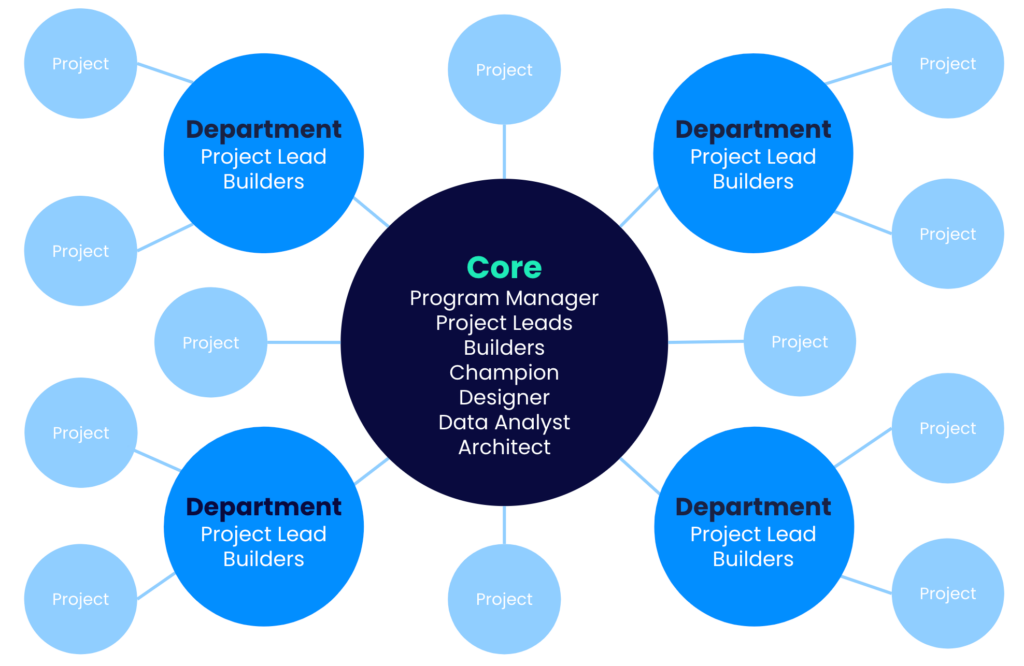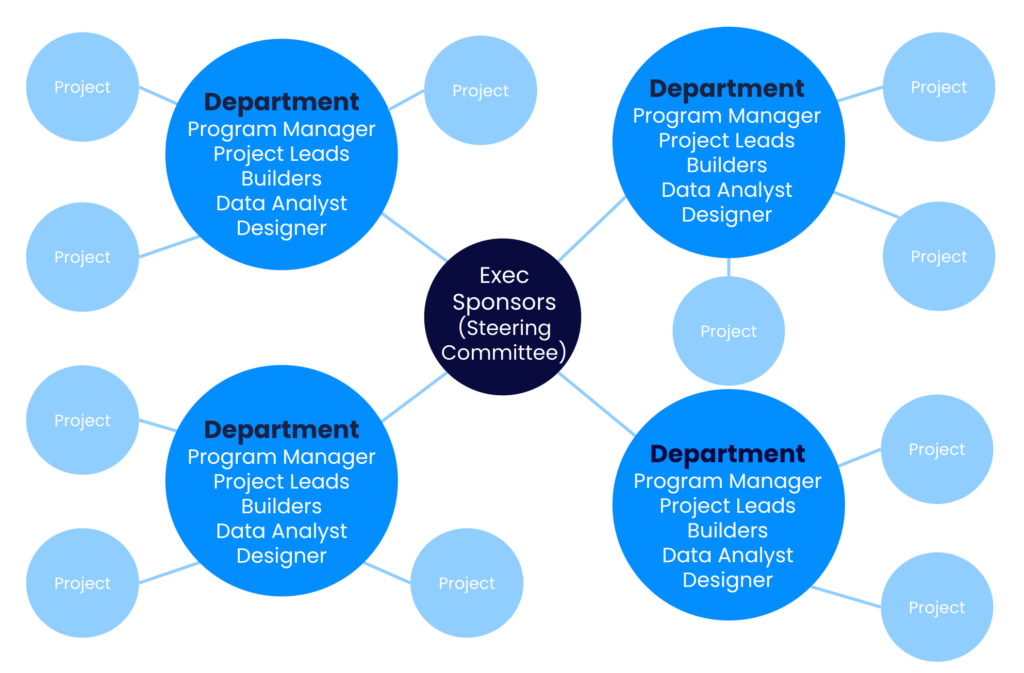Governance Models
Brief Overview
A governance model provides structure for knowledge, expertise, resources, and disciplines to attain and sustain world-class performance and value at scale. Identifying with a program model (current and future state) improves alignment and accelerates time to scale for your WalkMe program.
There are a many types of governance models, but the following are characteristics of all governance models:
- Consistent: Driven by procedures + policies to enforce stakeholder compliance
- Reflective: Considers company-specific strengths, weaknesses, opportunities and threats
- Central Authority: Maintains strategic alignment as the program scales
- People-Centric: Detailed hiring, outsourcing, and/or reallocation plan
- Iterative: Standard operating procedures are revisited and adjusted
Governance Models
Centralized
A Centralized governance model is suggested if you are new to a DAP Program. It creates a foundation of strategic alignment, accountability, and consistency.
- All DAP projects are run by a single team
- Projects are accepted and prioritized only if they align to the strategic goals of the DAP Program
- Standard operating procedures are established and govern the DAP Team
Pros: Strategic alignment and accountability; content is consistent
Cons: Limited speed, scalability, and flexibility

Basic Hybrid
As your DAP footprint expands, the interest and demands can lead you to enter a Hybrid mode.
- Department creates a project team for additional, department-specific delivery
- Your team (Core) continues to focus on projects with strategic or enterprise-wide focus
- Governing body (Core) holds the department accountable for following process & procedures set
Pros: Agility and flexibility in content creation, easily tailored to existing CoE structure
Cons: Additional complexity in setting up, requires strategic alignment

Advanced Hybrid
As your Hybrid model grows:
- More departments create their own project teams for additional, department-specific delivery
- Your team (Core) continues to focus on projects with strategic or enterprise-wide focus
- Governing body (Core) holds the department accountable for following process & procedures set

Decentralized
In some organizations, the digital adoption program evolves into a Decentralized model.
- Each department has its own self-sufficient team of DAP professionals
- A Steering Committee of Executive Sponsors makes all high-level approvals and decisions for DAP
Pros: Agility and flexibility in content creation, high project throughput
Cons: More difficult strategic alignment, content inconsistencies, accountability
Which is the best model for us?
Though there is no “one size fits all” model, consider these common trends:
-
- Though your optimal model depends on enterprise and environmental factors at your company, all companies should start Centralized to set and test the foundation.
- Models commonly transition over 3-5 years as programs scale.
-
- Commonly, models transition from Centralized to Hybrid as some departments employ (or outsource) their own content delivery teams. Not all models make the next move from Hybrid to Decentralized (all departments employ their own content delivery teams).

Get Started
Huddle with your team and discuss:
- What other governance models has my company created in the past? To what extent were these governed centralized vs decentralized?
- What are my business's strengths, weaknesses, opportunities and threats (both specific to WalkMe and more broadly)?
- How can I create a Phase 1 program model that risk-manages in consideration of these?


